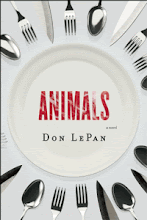But the fact is that the vast majority even of “reputable brands” aren’t transparent about their practices. And, interestingly, there seems to be little or no correlation between the list of companies that have cultivated reputations as ethical enterprises and the list of companies that actually behave in a responsible, transparent, ethical way. I came across one instance of this recently when my partner was ordering some of my favorite L.L. Bean shirts for me. I thought I had some sense of L.L. Bean being an ethical brand, but after Maureen had put in the order I thought “maybe I’ll just check their website and see what it says.” Sure enough, the reassurance was all there in black and white—and in large print too: “You can be assured that [an L.L. Bean product] was manufactured under legal, safe and fair working conditions. Because we believe every worker—and every person—deserves respect.”
Those visiting the site can also click on the L.L. Bean Official Manufacturer’s Code of Conduct. That’s in much smaller print. Here is some of what it says:
As a base, employers will pay employees the prevailing industry wage or at least the minimum wage required by local law, whichever is higher….
Except in extraordinary business circumstances, employees …will not be required to work more than … 66 hours per week.My favorite L.L. Bean shirts are made in Malaysia, so I looked up the minimum wage in Malaysia—it’s equivalent to roughly $1.25 in American currency. Was the “prevailing industry wage” any higher? I couldn’t find anything suggesting that it was; “prevailing industry wage” is of course a notoriously slippery term. So too is “extraordinary business circumstances.” I sent the folks at L.L. Bean an email:
Dear LL BeanThat was over a month ago; I’ve received no reply.
… I’d always assumed LL Bean would have high standards; what a rude shock it was to discover that what you describe as “strict standards” are in fact so lax. You allow people to work 66 hours per week in your factories—that’s 10 ½ hours a day, 6 days a week! But in fact they may have to work even more than that if their employer declares that “extraordinary business circumstances” apply. That’s a loophole wide enough to drive a Mack Truck through.
And how much are employees paid? In Malaysia, where these shirts are made, I see the local minimum wage is 5.05 local currency an hour—equivalent to roughly US $1.25. In other words, when one checks out the fine print in your “Official Manufacturer’s Code of Conduct,” it’s clear that the workers in your factories can work incredibly long hours at incredibly low wages. Yet in the large print you make this boast: “you can be assured that it was manufactured under legal, safe and fair working conditions. Because we believe every worker – and every person – deserves respect.”
How do you square the two? And when will you be raising your standards?
But I did discover late last week that L.L. Bean is far from unusual. The CBC had an excellent feature last Friday on The Current—a David Common interview with Carry Somers, the founder and head of Fashion Revolution, “an advocacy group that demands transparency and improved business practices in the fashion industry.” They publish a Fashion Transparency Index that lists 200 leading suppliers of clothing—and ranks them. I urge you to check it out. You’ll find, among other things, that no brand achieved a score of over 70%, and that only five brands achieved a score of between 61 and 70%. Of the 200, 92 scored in the 0-10% range. And in between? Let me pass along a very partial list of the various categories:
61-70%: 5 brands— Adidas, Reebok, Patagonia, Esprit, H&MAgain, there seems to be little or no correlation between the list of companies that have cultivated reputations as ethical enterprises and companies that actually behave in a responsible, transparent, ethical way. Nor is there much correlation between higher priced, luxury brands and brands that behave more ethically. Prada and Ralph Lauren and Saks Fifth Avenue are in the same low group as Walmart—while Old Navy and Converse are in the second-highest group. Not surprisingly, I suppose, the companies that could most easily afford to treat their workers better are not always most likely to do so.
51-60%: 15 brands, including The North Face, Wrangler, Nike, Converse, Banana Republic, The Gap, Old Navy, and Levi Strauss
41-50%: 17 brands, including Hugo Boss, Calvin Klein, United Colors of Benetton, Tommy Hilfiger, and Lululemon
31-40%: 15 brands, including Gucci, St Laurent, Bonprix, Burberry, and Target
21-30%: 30 brands, including Walmart, Hudson’s Bay, Saks Fifth Avenue, Ralph Lauren, Prada
11-20%: 47 brands, including Land’s End, Abercrombie & Fitch, American Eagle, Hanes, Macy’s Bloomingdales, Joe Fresh, J.C. Penney, J. Crew
0-10%: 92, including Brooks Brothers, Footlocker, Urban Outfitters, Versace, Eddie Bauer—and L.L. Bean
I know one thing: next time I buy shirts, I’m going to be looking at what Patagonia has to offer before I consider buying my old favorites at L.L. Bean!




